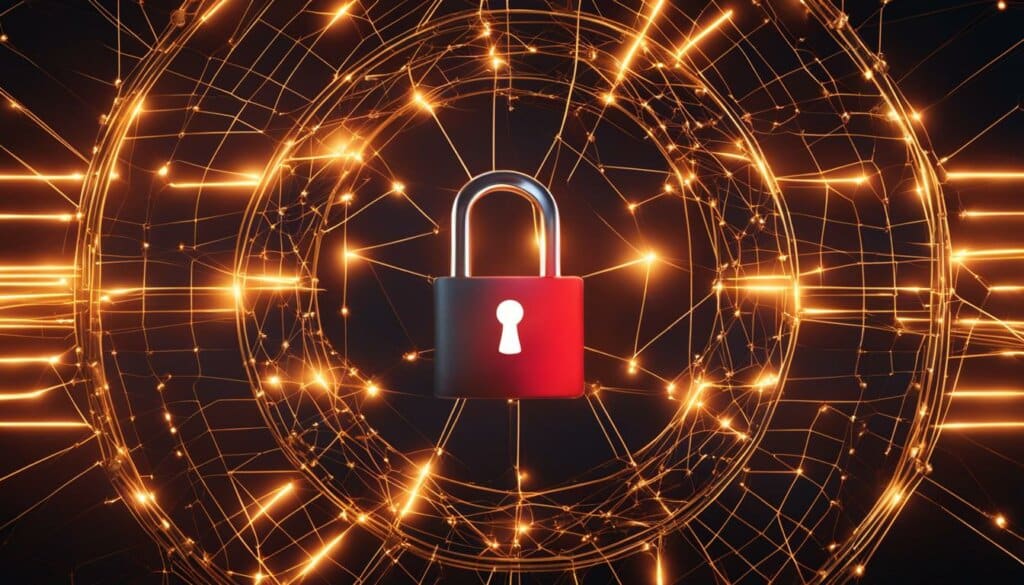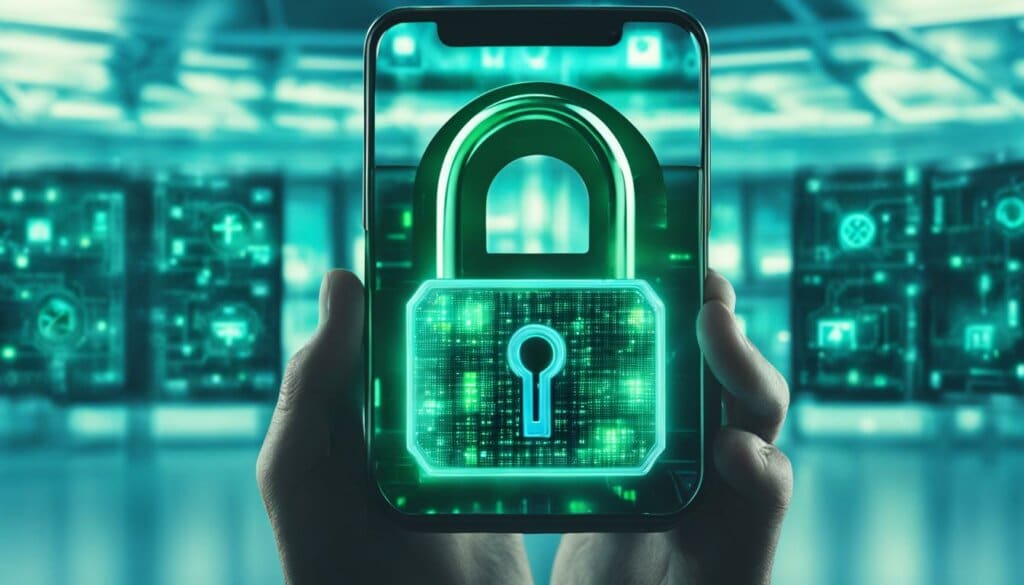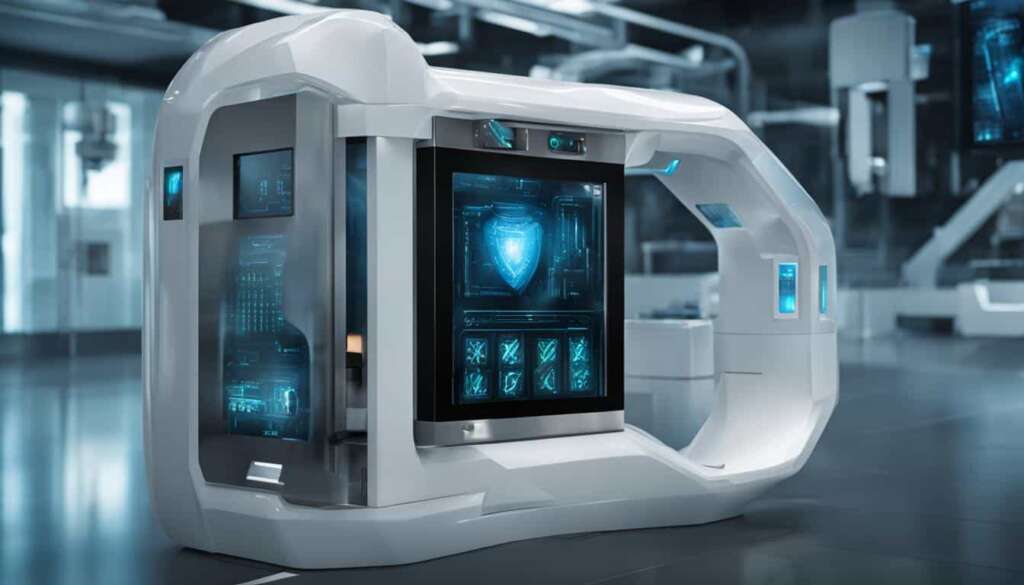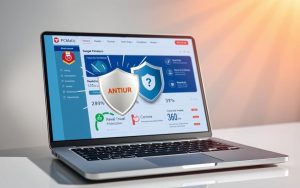Table of Contents
Cybersecurity in IoT healthcare devices is of utmost importance due to the increasing reliance on connected devices in the healthcare industry. With the growth of the Internet of Things (IoT) in healthcare, the need for robust cybersecurity measures has become critical. Data breaches and ransomware attacks pose significant risks to the security of sensitive medical information.
Importance of Securing IoT Healthcare Devices
The increasing reliance on connected devices in the healthcare industry has highlighted the critical importance of securing IoT healthcare devices. With the growth of the Internet of Things (IoT) in healthcare, it is crucial to implement cybersecurity solutions to protect sensitive data and ensure the secure operation of these devices.
IoT healthcare devices collect and transmit vast amounts of data, including sensitive medical information. Without proper cybersecurity measures, this information is at risk of being accessed by unauthorized entities, leading to privacy breaches and potential harm to patients. Therefore, securing IoT healthcare devices is essential for data protection and maintaining the integrity of healthcare systems.
To achieve effective cybersecurity in IoT healthcare devices, robust security measures must be implemented. This includes encryption to safeguard data during transmission and storage, access controls to restrict unauthorized access, and regular security updates to address vulnerabilities. Additionally, strong authentication mechanisms should be in place to ensure that only authorized individuals can access and interact with these devices.
By prioritizing the security of IoT healthcare devices, healthcare organizations can mitigate risks and protect sensitive data. This requires a collaborative effort among device manufacturers, healthcare institutions, and end-users to implement cybersecurity solutions, adhere to best practices, and stay vigilant against emerging threats.
Risks Associated with IoT Healthcare Devices
The widespread use of IoT healthcare devices has brought about significant security risks that need to be addressed. The nature of these devices, which are connected to the internet and collect and transmit sensitive medical information, makes them vulnerable to various threats. Understanding the risks and software safety classification associated with IoT healthcare devices and all medical devices in general, is crucial in order to implement effective security measures and protect patient data.
Data Breaches: One of the primary risks faced by IoT healthcare devices is data breaches. If a device’s security measures are inadequate, hackers can exploit vulnerabilities to gain unauthorized access to medical information. This can lead to privacy breaches and the exposure of sensitive data, potentially putting patients at risk.
Ransomware Attacks: IoT healthcare devices are also susceptible to ransomware attacks. These attacks involve hackers gaining control of the device and demanding a ransom in exchange for the release of the device or the data it holds. Such attacks can disrupt healthcare services and compromise the integrity of patient data.
“Inadequate security controls and poor security testing can expose these devices to threats, compromising patient safety and the integrity of healthcare organizations’ infrastructure.”
Securing IoT Healthcare Devices
In order to mitigate the risks associated with IoT healthcare devices, it is essential to implement robust security measures. This includes:
- Ensuring that devices have strong authentication mechanisms and encryption protocols to protect against unauthorized access.
- Regularly updating device firmware and software to address any security vulnerabilities.
- Implementing network segmentation to prevent unauthorized access to sensitive data.
- Conducting regular security audits and testing to identify and address any potential vulnerabilities.
By taking proactive steps to secure IoT healthcare devices, healthcare organizations can protect patient data and ensure the integrity of their infrastructure.
| Risks | Security Measures |
|---|---|
| Data Breaches | Strong authentication mechanisms and encryption protocols |
| Ransomware Attacks | Regular firmware and software updates |
| Unauthorized Access | Network segmentation and regular security audits |

Securing IoT healthcare devices is a complex task that requires a multi-faceted approach. By understanding the risks associated with these devices and implementing appropriate security measures, healthcare organizations can protect patient data and ensure the delivery of safe and quality healthcare services.
Cybersecurity in IoT Healthcare Devices: A Shared Responsibility
In the rapidly evolving landscape of IoT healthcare devices, cybersecurity is a critical factor that requires a shared responsibility among device manufacturers, healthcare organizations, and end-users. Each stakeholder plays a crucial role in ensuring the security and protection of sensitive medical information. By understanding their respective responsibilities and implementing appropriate cybersecurity measures, the healthcare industry can effectively mitigate potential risks and safeguard patient safety.
Device manufacturers bear the responsibility of designing and producing IoT healthcare devices with robust security features. Encryption, secure firmware update mechanisms, and regular security patches are essential components of a comprehensive security strategy. By prioritizing security in the development process, manufacturers can ensure that their devices meet the highest standards of cybersecurity.
Healthcare organizations must also take an active role in securing IoT devices by implementing cybersecurity solutions and best practices. This includes maintaining an inventory of IoT devices, implementing network segmentation, and conducting real-time monitoring and detection. Robust authentication mechanisms, security protocols, and privacy-preserving solutions are crucial for protecting sensitive data and preventing unauthorized access.
End-users, including healthcare professionals and patients, have a vital role to play in ensuring the security of IoT healthcare devices. By keeping software up-to-date, using strong passwords, and enabling two-factor authentication, end-users can significantly reduce the risk of unauthorized access to devices and data. Additionally, awareness of potential threats and exercising caution when providing personal information are essential in maintaining a secure healthcare environment.
| Stakeholder | Responsibility |
|---|---|
| Device Manufacturers | Design and produce devices with robust security features, encryption, and secure firmware update mechanisms. Regularly release security patches to address vulnerabilities. |
| Healthcare Organizations | Implement cybersecurity solutions and best practices, including maintaining an inventory of IoT devices, implementing network segmentation, and conducting real-time monitoring and detection. Ensure robust authentication mechanisms, security protocols, and privacy-preserving solutions. |
| End-Users | Keep software up-to-date, use strong passwords, enable two-factor authentication, and exercise caution when providing personal information. Be aware of potential threats and security best practices. |
By recognizing the shared responsibility and working together, device manufacturers, healthcare organizations, and end-users can create a resilient and secure IoT ecosystem in the healthcare industry. Through collaboration, continuous improvement, and adherence to cybersecurity best practices, the healthcare industry can reap the benefits of IoT technology while effectively protecting sensitive data and ensuring patient safety.
Best Practices for IoT Security in Healthcare
Implementing best practices for IoT security in the healthcare industry is crucial to safeguard sensitive data and protect against cyber threats. With the increasing use of IoT devices in healthcare, ensuring the security and integrity of these devices is of utmost importance. By following established cybersecurity solutions and adopting data protection measures, healthcare organizations can mitigate the potential risks associated with IoT security in healthcare.
Evidence-Based Best Practices
When it comes to securing IoT healthcare devices, it is essential to rely on evidence-based best practices. These practices are developed based on comprehensive research and analysis of the latest cybersecurity trends and threats. By implementing evidence-based best practices, healthcare organizations can stay ahead of potential security risks and ensure a secure environment for both patients and healthcare providers.
Continuous Monitoring and Threat Detection
Continuous monitoring and threat detection are vital components of IoT security in healthcare. The dynamic nature of cybersecurity threats requires proactive measures to identify and mitigate risks in real-time. Healthcare organizations should invest in robust monitoring solutions that provide visibility into their IoT devices’ activities, allowing them to detect and respond to threats promptly.
Regular Software Updates and Patch Management
Regular software updates and patch management are critical for maintaining the security of IoT healthcare devices. Software vulnerabilities can provide entry points for cyber attackers, compromising the confidentiality and integrity of data. By ensuring that all IoT devices are running on the latest software versions and promptly applying security patches, healthcare organizations can minimize the risk of potential cyber threats.
| Best Practices for IoT Security in Healthcare | Benefits |
|---|---|
| Implement evidence-based best practices | Stay ahead of potential security risks |
| Continuous monitoring and threat detection | Promptly identify and respond to threats |
| Regular software updates and patch management | Minimize the risk of cyber threats |
Legislative Pressures and IoT Security in Healthcare
The increasing usage of Internet of Things (IoT) devices in the healthcare industry has prompted governments and international organizations to address the security and privacy risks associated with this technology. Legislative pressures are being introduced to protect users and ensure the secure deployment of IoT systems in healthcare.
Government efforts include the development of security guidelines specifically targeted at IoT devices used by government agencies. These guidelines aim to establish robust cybersecurity measures that protect sensitive data and safeguard the integrity of healthcare institutions.
Additionally, some governments have introduced cybersecurity labeling programs to help consumers identify which IoT devices meet specific security standards. This initiative aims to incentivize manufacturers to prioritize security in the design and production of IoT healthcare devices, ultimately ensuring the safety and privacy of patients.
| Legislative Efforts | Key Objectives |
|---|---|
| Security guidelines for IoT devices | Establish robust cybersecurity measures |
| Cybersecurity labeling programs | Promote manufacturers’ prioritization of security |
Legislative pressures are essential for promoting cybersecurity and resiliency in the healthcare industry. By setting clear standards and guidelines, governments can ensure that IoT healthcare devices are developed and deployed with the necessary security measures in place, protecting both patient data and the overall integrity of healthcare systems.
Legislative measures, combined with industry regulations and best practices, work together to create a secure environment for IoT in healthcare. It is the joint responsibility of device manufacturers, healthcare organizations, and end-users to adopt and implement appropriate measures that protect against the evolving threats in the IoT landscape.

Challenges and Risks in IoT Adoption in Healthcare
The increasing adoption of IoT devices in healthcare brings with it a range of challenges and risks that need to be addressed to ensure the secure and efficient operation of these devices. One of the primary challenges is the need for robust cybersecurity measures to protect sensitive data and prevent unauthorized access.
Healthcare IoT devices are particularly vulnerable to security breaches, as they often lack adequate security features. This makes them attractive targets for cybercriminals seeking to gain access to valuable medical information or disrupt critical healthcare systems. Ransomware attacks, in particular, have become increasingly prevalent, posing a significant threat to healthcare organizations.
Another challenge in the adoption of IoT devices in healthcare is compliance with data security and privacy regulations. The processing and transfer of personal information raise concerns about privacy and the potential for data breaches. Healthcare organizations must navigate these regulations to ensure they are storing and transmitting data securely and in compliance with legal requirements.
To mitigate these challenges and risks, healthcare organizations need to implement robust IoT security measures. This includes implementing strong authentication protocols, encryption for data transmission, and regular security audits to identify and address vulnerabilities. Additionally, ongoing staff training and awareness programs can help ensure that end-users are knowledgeable about potential risks and take necessary precautions.
| Challenges | Risks |
|---|---|
| Lack of robust cybersecurity measures | Data breaches and unauthorized access |
| Compliance with data security and privacy regulations | Potential privacy breaches |
| Increasing prevalence of ransomware attacks | Disruption of critical healthcare systems |
By addressing these challenges and implementing effective security measures, healthcare organizations can ensure the secure adoption and operation of IoT devices in the healthcare industry. Collaboration between device manufacturers, healthcare organizations, and end-users is crucial in creating a comprehensive and resilient security ecosystem for IoT in healthcare.
Role of Device Manufacturers in IoT Security
Device manufacturers play a crucial role in ensuring the security of IoT healthcare devices. By implementing “security by design” and “security by default” principles, manufacturers can contribute to the overall security of IoT devices in the healthcare industry.
One important aspect of securing IoT healthcare devices is designing devices with robust security features. This includes incorporating encryption mechanisms to protect sensitive data and secure firmware update processes to address vulnerabilities. Regularly releasing security patches is also essential to ensure that devices remain protected against emerging threats.
Furthermore, device manufacturers should prioritize interoperability and compatibility with other security solutions. This allows healthcare organizations to integrate IoT devices seamlessly into their existing security infrastructure, ensuring a holistic approach to cybersecurity in healthcare settings.

“Device manufacturers have a responsibility to proactively address cybersecurity challenges in IoT healthcare devices. By prioritizing security in the design and manufacturing process, manufacturers can contribute to the overall resilience of healthcare systems.”
Table: Comparison of Security Features in IoT Healthcare Devices
| Security Feature | Description |
|---|---|
| Encryption | Ensures the confidentiality of sensitive data transmitted by IoT healthcare devices. |
| Firmware Update Mechanism | Enables timely installation of security patches and updates to address vulnerabilities. |
| Interoperability | Ensures seamless integration with other security solutions to enhance overall system security. |
| Secure Authentication | Provides authentication mechanisms to verify the identity of users and devices. |
Collaboration between device manufacturers, healthcare organizations, and end-users is crucial to enhance the security of IoT healthcare devices. Device manufacturers must continue to prioritize security in their product development processes, while healthcare organizations should implement comprehensive cybersecurity solutions and best practices. Additionally, end-users should stay vigilant and follow security recommendations to protect their devices and data.
Role of Healthcare Organizations in IoT Security
Healthcare organizations play a crucial role in ensuring the security of IoT devices in the healthcare industry. With the increasing use of connected devices, it is essential to implement robust healthcare IoT security measures to protect sensitive data and maintain a safe environment for patients and healthcare professionals.
One of the key healthcare IoT security measures is to maintain an inventory of all IoT devices used within the organization. This helps in keeping track of the devices and ensures that they are regularly updated with the latest security patches and firmware updates. By regularly monitoring and managing these devices, healthcare organizations can minimize potential vulnerabilities and proactively address security risks.
In addition to device management, providing network segmentation is another important aspect of healthcare IoT security. By dividing the network into separate segments, healthcare organizations can isolate IoT devices from other critical systems, limiting the potential impact of a security breach. This segregation also helps in controlling access to sensitive data and resources, providing an additional layer of protection.
Real-time monitoring and detection capabilities are crucial for healthcare organizations to identify any suspicious activities or unauthorized access to IoT devices. By implementing advanced security tools and technologies, such as intrusion detection systems and security event management, healthcare organizations can quickly respond to potential threats and mitigate risks. Timely detection and response can significantly minimize the impact of security incidents and protect sensitive patient information.
| Healthcare IoT Security Measures | Description |
|---|---|
| Device Inventory and Management | Maintain a comprehensive inventory of all IoT devices used within the organization and regularly update them with the latest security patches and firmware updates. |
| Network Segmentation | Divide the network into separate segments to isolate IoT devices from critical systems, limiting the potential impact of a security breach. |
| Real-Time Monitoring and Detection | Implement advanced security tools and technologies to monitor and detect any suspicious activities or unauthorized access to IoT devices in real-time. |
| Robust Authentication Mechanisms | Utilize strong authentication protocols, such as two-factor authentication, to ensure authorized access to IoT devices and protect against unauthorized use. |
| Privacy-Preserving Solutions | Implement privacy-preserving solutions, such as data anonymization and encryption, to protect the confidentiality and integrity of patient information. |
Robust authentication mechanisms and privacy-preserving solutions are also crucial in securing IoT healthcare devices. By implementing strong authentication protocols, such as two-factor authentication, healthcare organizations can ensure that only authorized individuals have access to IoT devices and protect against unauthorized use. Additionally, privacy-preserving solutions, such as data anonymization and encryption, can safeguard the confidentiality and integrity of patient information, maintaining compliance with data protection regulations.
The Role of End-Users in IoT Security
End-users, such as healthcare professionals and patients, play a crucial role in ensuring the security of IoT devices in the healthcare industry. By following best practices and taking appropriate precautions, they contribute to the overall protection of sensitive data and mitigate the risks associated with IoT security.
One of the key responsibilities of end-users is to keep their software up-to-date. Software updates often include security patches that address vulnerabilities and strengthen the security of IoT devices. By regularly installing updates, end-users can ensure that their devices have the latest protections against emerging threats.
Using strong passwords is another important measure for enhancing IoT security. End-users should create passwords that are unique, complex, and not easily guessable. Additionally, enabling two-factor authentication adds an extra layer of security by requiring a second form of verification, such as a code sent to a mobile device, before accessing IoT devices or platforms.
When it comes to data transmission, end-users should prioritize the use of secure protocols. Encrypting data and using secure communication channels can prevent unauthorized access and protect the confidentiality and integrity of sensitive information. It is also crucial for end-users to exercise caution when providing personal information, ensuring that they only share it with trusted sources and platforms.

Best Practices for End-Users in IoT Security:
- Keep software up-to-date to benefit from the latest security patches.
- Use strong, unique passwords and enable two-factor authentication.
- Prioritize the use of secure protocols for data transmission.
- Exercise caution when providing personal information and only share it with trusted sources.
Increasing Usage of IoT Devices and Legislative Pressures
The use of IoT devices in healthcare is on the rise, as they offer numerous benefits such as remote monitoring, improved patient access to healthcare services, and real-time data collection. These devices allow healthcare providers to deliver personalized care, enhance patient outcomes, and increase operational efficiency. However, along with the increased usage of IoT devices in healthcare comes the need for robust security measures to protect sensitive data and ensure patient privacy. This has led to the introduction of legislative pressures and regulations aimed at securing IoT healthcare devices and promoting data protection.
Legislations and regulations related to IoT security in healthcare are being implemented by governments and international organizations to safeguard patient information and prevent cyber threats. These regulations focus on various aspects, including data protection, privacy rights, and the secure deployment of IoT systems in healthcare settings. For example, some regulations mandate the use of strong encryption algorithms to protect data transmitted by IoT devices, while others require healthcare organizations to conduct regular security audits and implement stringent access controls.
These legislative pressures are essential in ensuring that IoT healthcare devices adhere to security standards and best practices. By imposing regulations, governments aim to create a secure and trustworthy environment for the use of IoT devices in healthcare. Compliance with these regulations not only protects patient data but also builds trust between healthcare providers and patients, fostering the widespread adoption of IoT technology in the healthcare industry.
| Benefits of Increasing Usage of IoT Devices in Healthcare |
|---|
| Improved patient access to healthcare services |
| Real-time data collection for personalized care |
| Enhanced patient outcomes and operational efficiency |
Data Protection Measures for IoT Healthcare Devices
- Implement strong encryption algorithms for data transmission.
- Establish robust access controls to ensure authorized access.
- Conduct regular security audits to identify vulnerabilities.
- Train healthcare staff on cybersecurity best practices.
- Monitor IoT devices in real-time for potential security breaches.
As the usage of IoT devices in healthcare continues to expand, it is crucial for all stakeholders, including device manufacturers, healthcare organizations, and end-users, to prioritize the security of these devices. By embracing legislative pressures and implementing data protection measures, the healthcare industry can harness the full potential of IoT technology while safeguarding patient privacy and maintaining the trust of patients and healthcare providers alike.
Conclusion
Cybersecurity in IoT healthcare devices is a critical concern, given the increasing reliance on connected devices in the healthcare industry. With the growth of the Internet of Things (IoT) in healthcare, the need for robust cybersecurity measures has become paramount. Data breaches and ransomware attacks pose significant risks to the security of sensitive medical information.
Implementing best practices for securing IoT devices, along with legislative pressures and industry regulations, are essential steps in protecting sensitive data and ensuring a safe and secure healthcare environment. All stakeholders, including device manufacturers, healthcare organizations, and end-users, must work together to mitigate the risks and stay ahead of the evolving threat landscape.
By prioritizing cybersecurity in IoT healthcare devices, organizations can safeguard against potential threats to data integrity and patient safety. The adoption of secure IoT practices, such as encryption, access controls, and regular software updates, plays a crucial role in mitigating risks and ensuring the confidentiality, integrity, and availability of healthcare devices. It is imperative that the industry continues to invest in and prioritize IoT security to uphold the trust and privacy of patients.
In conclusion, cybersecurity in IoT healthcare devices is a shared responsibility that requires collaboration and dedication from all stakeholders. With a focus on best practices, legislative pressures, and industry regulations, the healthcare industry can navigate the challenges and risks associated with IoT devices and protect sensitive healthcare data. By embracing a proactive and comprehensive approach to IoT security, we can create a future where connected healthcare devices are secure and reliable.
FAQ
What is the importance of securing IoT healthcare devices?
Securing IoT healthcare devices is crucial to protect sensitive medical information from unauthorized access and potential harm to patients.
What are the risks associated with IoT healthcare devices?
IoT healthcare devices are vulnerable to data breaches, ransomware attacks, and unauthorized access to medical information, compromising patient safety and organizational infrastructure.
Who is responsible for cybersecurity in IoT devices?
Cybersecurity in IoT devices is a shared responsibility between device manufacturers, healthcare institutions, and end-users.
What are the best practices for IoT security in healthcare?
Best practices include maintaining strong confidentiality and integrity measures, implementing access controls, and prioritizing availability through redundancy mechanisms and regular maintenance.
How does legislation address IoT security in healthcare?
Governments and international organizations introduce regulations to protect users and ensure secure deployment of IoT systems in healthcare, such as security guidelines and cybersecurity labeling programs.
What are the challenges and risks in adopting IoT devices in healthcare?
Challenges include data security and privacy concerns, as well as the lack of robust security measures in many medical IoT devices, making them potential entry points for cyberattacks.
What is the role of device manufacturers in IoT security?
Device manufacturers play a critical role in designing devices with robust security features, regularly releasing security patches, and implementing “security by design” principles.
What is the role of healthcare organizations in IoT security?
Healthcare organizations should implement cybersecurity solutions, maintain an inventory of IoT devices, provide network segmentation, and ensure real-time monitoring and detection.
What is the role of end-users in IoT security?
End-users should keep software up-to-date, use strong passwords, enable two-factor authentication, and exercise caution when providing personal information.
How does legislative pressure impact the usage of IoT devices in healthcare?
Legislative pressures aim to ensure the secure deployment of IoT systems in healthcare and protect sensitive data, promoting cybersecurity and resiliency.
Source Links
- https://www.paloaltonetworks.com/network-security/medical-iot-security
- https://www.isaca.org/resources/news-and-trends/isaca-now-blog/2022/addressing-security-risks-to-medical-iot-devices
- https://www.healthcareittoday.com/2023/02/28/how-to-address-security-issues-in-iot-devices-cybersecurity/









